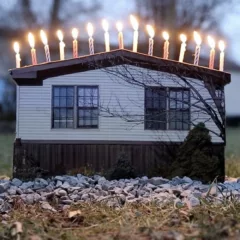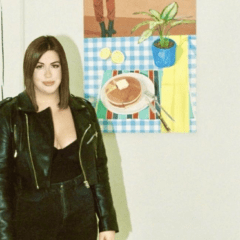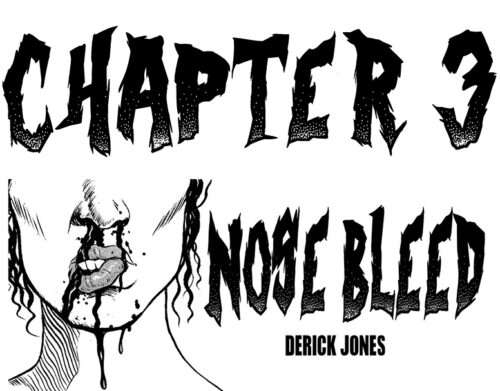For the month of October, Grizzly Grizzly is doing its best to turn the tables not on the photographer, but on the camera itself. The name of the show, “Obscure Cameras,” is a direct flip-flopping of the term camera obscura, a simple device for projecting images, which predates modern photography as we know it. In the gallery space, strange contraptions hang on the walls and sit on shelves, interspersed with esoteric photographs. Some of the gadgets are more obviously photo-taking machines – fitted with lenses and dials – while others couldn’t look much less camera-like. One thing they all share, however, is functionality.
Jonathan David Price builds a number of wooden casings in which he installs the components of disassembled film cameras. The fact that his constructions still bear a resemblance to photography equipment makes them the more obvious of the cameras in the show. His devices are fairly practical – made of uncolored wood and pieces of recognizable hardware. What prove to be less standard are their configurations.
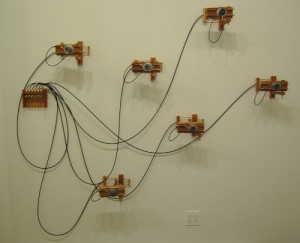
In “Observation Camera”, Price connects six cameras together in such a way that one can fire off multiples, potentially all of them, at the same time. The name is telling of the function. The cameras are an apparent parody of actual observation cameras, the seemingly omnipresent surveillance, CCTV and security cameras in spaces public and private. What makes this Rube Goldbergian-wiring particularly amusing is that unlike real observational cameras, this observation apparatus can take only individual frames, with the assistance of user input, leaving it functional but rather impotent.
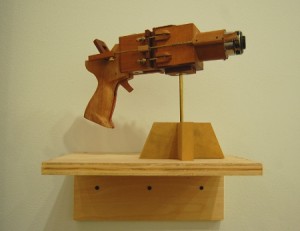
Price also includes a similar, circular camera which is capable (and somewhat more effective than its counterpart) of taking panoramic shots. Speaking of shots, two of the cameras on display are modeled after guns – a pistol and a rifle – drawing on the parallels between firearms and photography. Both processes utilize aiming and triggers, except that one aims to eradicate while the other aims to capture and represent. What is for sure is that these cameras look more like something Han Solo totes around in Star Wars: A New Hope than anything useful in picture taking.
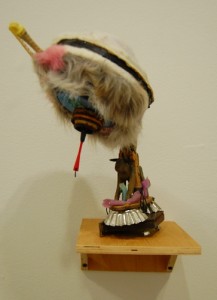
Julie Schustack starts from an entirely different angle to construct her cameras, leaving functionality as one of the only ties between the artists. Viewing photography as a process of preservation and subjective expression, Schustack had friends send her various trinkets and mementos that they had collected. She then assembled these knick-knacks into small sculptures and fitted them with working cameras. The results are assembled from idiosyncratic personal effects as much as they are capable of producing them.
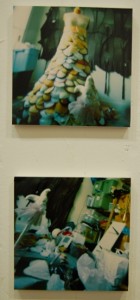
Each one of her tiny assemblages is named after the friend that sent her the initial objects, such as “Emily,” “Kristen” and “Jana.” The completed pieces were then sent back to her friends — who utilized them to shoot pictures — and returned once again to the artist. Schustack displays each sculpture next to its photographic product, beginning a loop of ownership and creation that is directed by her and executed by others.

Also notable in the exhibit is an actual live working version of the camera obscura, assembled by Jeffrey Moser. The device serves as a window into the gallery from outside, flipping the entire scene upside down. If you thought you had photography nailed down, “Obscure Cameras” offers some new configurations and processes, which twist and enliven a seemingly common contemporary device.



